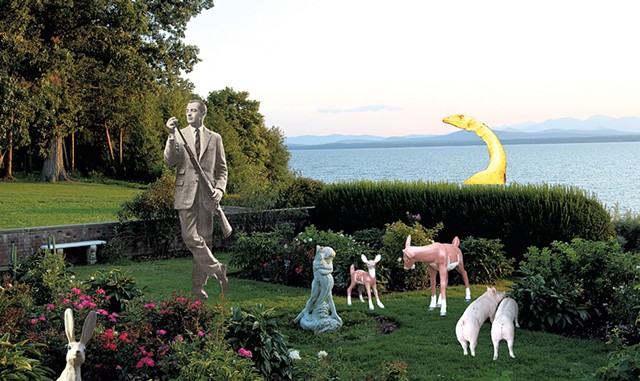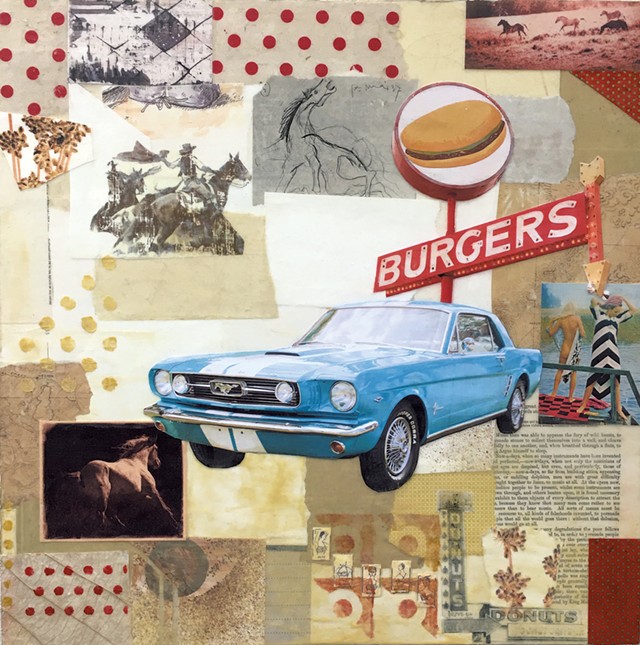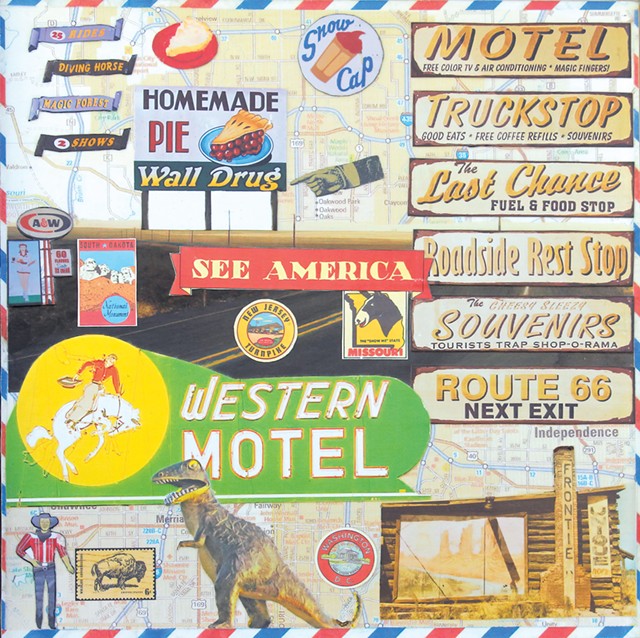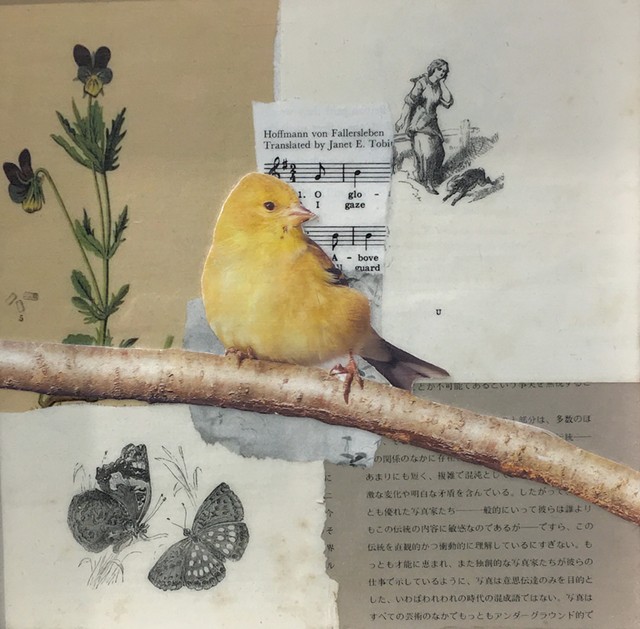Four years, two disasters, and three tries. And now Victoria Blewer’s exhibition is finally open at the Vermont Supreme Court Gallery.
“Material Matters” is a different show than the one originally conceived before it was rescheduled because of the pandemic, or the second show which was being installed as the Montpelier floodwaters rose.
“Every time it was canceled, I did more work,” said Blewer.
“Material Matters” opened earlier this month and continues to June 28. The exhibition features two bodies of Blewer’s work. Living in Weybridge, Blewer well known for her hand-colored, black-and-white photographic images. Her selections here focus on barns. The other half of the exhibition presents mixed media collage — both digital and analog — a recent direction in Blewer’s creative practice.
The show’s title “Material Matters” connects to this dual focus and the shortage of physical material that spurred the artist’s collage.
“I’m not the sort to live my life based on a bumper sticker, but one stuck with me as I realized that technology was forcing me to reimagine everything I have done or may do next as an artist: ‘Change is inevitable. Growth is optional.’ And isn’t growth what every artist strives for? I remain confident that I’ll be able to create new and different work as long as the fates allow. The material matters. But so does the vision,” says Blewer in her artist’s statement.
The technology change Blewer refers to is the shift to digital photography from traditional photography and the disappearance of materials for its processes — specifically, for Blewer, a type of paper.
Since the 1980s Blewer has brought together her photography and hand painting. She has won numerous national and regional awards for her work.
Blewer shoots with black and white or infrared black and white film, printing the images on a porous paper. Next, she hand-colors the photograph with multiple light layers of oil paint. Her technique may bring to mind late 19th century painted portraits. The technique was widely used before color film.
Blewer notes in her explanation of this technique, “The result is an image that is dream-like, elegiac and (sometimes) surreal.”
Initially, Blewer’s colors were subtle and more reality based, but she went on to embrace vibrant ones. For the works in this exhibition, she turned to a bright but calming palette — blues, purple, lime green.
Saffron yellow, purple, and turquoise blue prevail in the three repeated photographs of “James’ Barn.” Blewer’s photograph focuses on the upper portion of the gable end of the barn with its hay hood over the double doors to the hayloft. Blewer shifts the colors in the images, drawing the viewer to different perceptions of the planes of the barn, sky, and details of aging clapboards and broken pieces of trim.
The problem, which Blewer saw coming, is that the porous paper she uses is no longer available. With the dominance of digital photography, the manufacturer stopped producing it. Although Blewer stockpiled what she could get, her supply is dwindling.
With this inevitability, Blewer chose to seize opportunity for change, and looked to collage. Collage had long interested her, she had taken a course in it in the 1990s, but had little experience with it.
“The pandemic wasn’t all awful for me because I could experiment. No one was buying photographs, shops weren’t open, so it was a good time to try this out,” said Blewer.
Most of Blewer’s collages start with one of her photographs. “Joy Ride” builds on her photograph of a car installation with a two-lane line of abandoned red cars, 1960s Eldorados perhaps, descending a hill to a swamp. “Gentleman Farmer” builds from the view of Lake Champlain and the Adirondacks from gardens at Shelburne Farms.
Diverse figures populate her pieces, often from magazines and advertising of the 1950s and 1960s — Sinclair Oil dinosaurs, ads targeting women to buy shoes or select refrigerator colors, vintage toys. With dinosaurs to the cosmos, nostalgic elements and quirky ones, there is a lot of commentary in Blewer’s collages, and reflection on our planet and its condition.
In “Don’t Believe Everything You See,” a tiny concrete bus stop is painted up with graffiti — the words “Question Everything” are prominent in red spray paint, a green eye with mascara lashes looks out. On the black and white photograph background, a collaged cat and dog skip down the street, a stork carries a baby past the moon, a pink pig flies, three pieces of lemon meringue pie float on red plates — and more.
Look in the brush in the left, behind the dapper fellow in the green suit — a faint image of a man seemingly at work at a control panel.
There is a lot to see in this cautionary piece and throughout Blewer’s collages.






